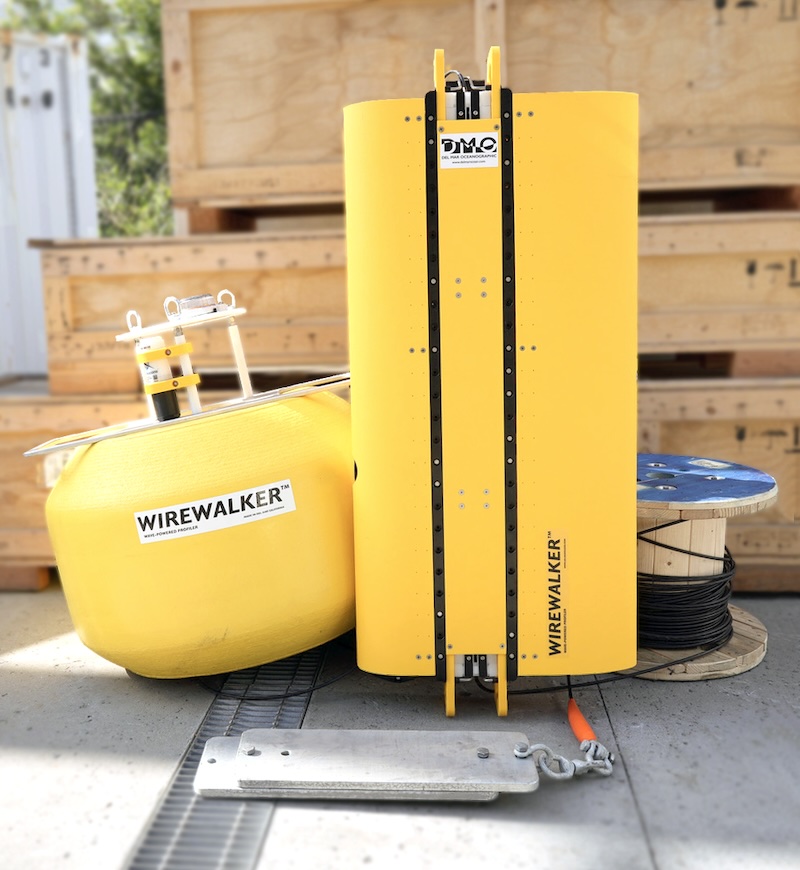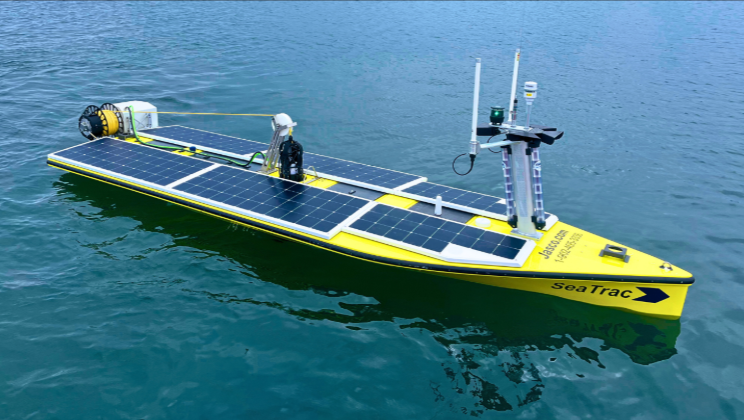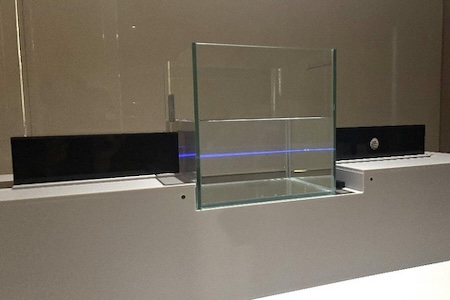
Ocean Monitoring System Technology
Discover cutting-edge solutions from 8 leading global suppliers
JASCO Applied Sciences and SeaTrac Systems have demonstrated a new approach to passive acoustic monitoring (PAM) using autonomous surface platforms.
The integration of JASCO’s advanced PAM system with SeaTrac’s solar-powered SP-48 Uncrewed Surface Vehicle (USV) was recently put to the test during a series of field trials off the coasts of Massachusetts and Rhode Island. One of the outcomes of these trials included successful real-time detections of the critically endangered North Atlantic Right Whale.
Conventional PAM methods typically rely on towed arrays that require constant movement and considerable onboard power, limiting both range and duration. In contrast, the new system features a collapsible, directional dipping array deployed via a heave-compensating winch. This configuration enables “sprint and drift” operations—allowing the USV to remain stationary while collecting acoustic data. This results in significantly lower energy consumption and supports longer missions with expanded spatial coverage.
SeaTrac’s SP-48 USV was purpose-built for this mission. The platform features a deep keel for increased stability, a 48V power system for sustained operations, and a robust onboard computer that controls the custom winch and sensor deployment. Its solar-electric propulsion ensures quiet, eco-friendly navigation—ideal for acoustic data collection in sensitive environments.
The real innovation lies in JASCO’s compact, collapsible hydrophone array. Engineered with four adjustable arms and a fabric damper to minimize flow noise and motion interference, the array expands once deployed to form a precise listening geometry. High-fidelity acoustic signals are streamed in real time to the system’s processing unit for immediate analysis.
JASCO’s OceanObserver™ serves as the core data acquisition system, streaming acoustic data directly to the onboard computer. The system leverages JASCO’s StreamRepeater and PAMlab-INT software to process marine mammal detections, generate ambient noise reports, and deliver operational insights. Data is relayed back to shore in real time via Iridium Certus and Starlink satellite links.
This always-on connectivity offers a substantial leap beyond traditional gliders, which are limited by surfacing requirements and low-bandwidth transmissions. The SP-48’s continuous satellite communication enables users to remotely access data, update detector configurations, and perform system diagnostics—anytime, from anywhere.
From December 2024 through April 2025, four separate trials were conducted in locations including Marblehead, MA; Point Judith, RI; and Cape Cod Bay, MA. These exercises covered a range of sea states and weather conditions, rigorously validating the system’s durability, autonomy, and acoustic performance.
Key Advantages of the SP-48 Dipping Array System
- Enhanced Shallow-Water Capability: Unlike gliders or traditional towed systems, the USV operates effectively in coastal and shallow regions—critical habitats for many marine species.
- Real-Time Data Access: High-bandwidth communication links support 24/7 remote monitoring and management.
- Energy-Efficient “Sprint and Drift” Mode: Allows the USV to collect data without constant propulsion, dramatically extending deployment life.
The results of these trials are seen as a major step forward in marine monitoring capabilities. By combining JASCO’s advanced acoustic sensing and processing technology with SeaTrac’s autonomous vehicle platform, this solution sets a new benchmark for cost-effective, real-time monitoring of marine mammal activity across diverse ocean environments.
















